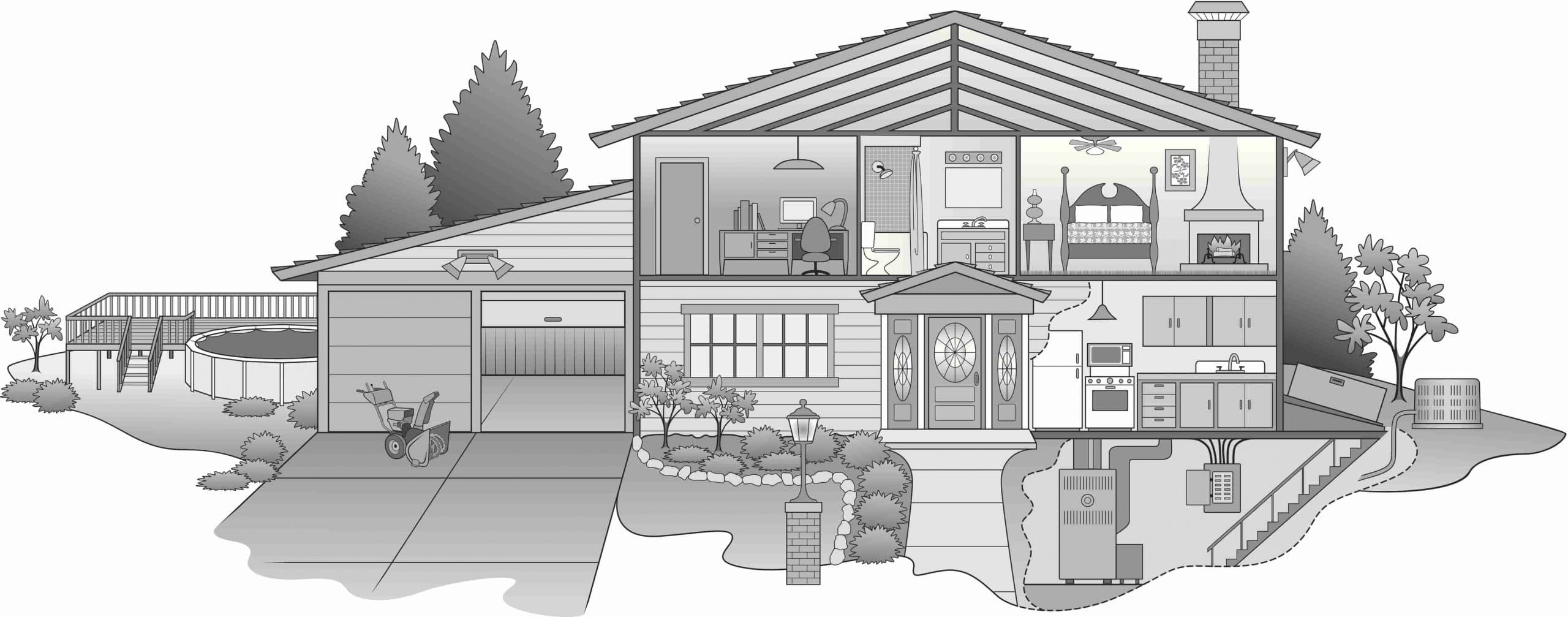
Home envelope is a catch-all term for various structural elements that work together to support a comfortable and efficient indoor environment. Generally, the envelope consists of the walls, the roof/attic, windows, doors, and the foundation/craw space. Here’s how each part of the home envelope plays a role and how to ensure it’s doing the job.
Walls
- Insulation. Exterior walls should be insulated to a level of R-13 to R-15 at the time of construction. Common insulation types are blown-in cellulose and fiberglass batts. Many homes built before 1980 lack wall insulation entirely. Blown-in insulation may be added to these homes, but it is a labor-intensive and somewhat costly process.
- Air Sealing. Indoor cracks or structural gaps that allow unwanted air leakage should be identified and sealed with caulking. Outdoors, any openings that allow air to enter the envelope should be closed.
Roof/Attic
- Radiant barriers. Roofs absorb solar energy that radiates downward into living spaces, raising cooling costs. A radiant barrier on the underside of the roof helps reflect radiant heat back outside through the roof.
- Attic insulation. To reduce heat infiltration, attic floors should be insulated to a level of R-30 to R-60. This equates to a range of 10 inches up to 20 inches of fiberglass batts, or 8 inches up to 17 inches of loose-fill cellulose.
Windows
- Insulated glass. Standard window glass accounts for up to 30% of unwanted home heat gain or loss. Insulated glass (IG) consists of two or three tightly spaced panes with low-emissivity coating integrated with a single, sealed unit installed in the window frame. IG upgrades can reduce heat gain or loss by 40% to 70%.
Doors
- Weatherstripping. Weatherstripping around doors to prevent air leakage requires periodic replacement. Quality vinyl or rubber bulb-type weatherstripping along the sides and top, along with an aluminum door sweep at the bottom, provides efficient air sealing.
Foundation/Craw Space
- Moisture and water can deteriorate your home’s foundation and can cause extensive damage to the home due to moisture/water damage and mold. A dry foundation is a wonderful thing. Encapsulated crawl spaces offer a clean, dry foundation area that doesn’t harbor mold. They’re also relatively inhospitable for pests.
For professional home comfort and efficiency needs, contact Jackson & Sons.